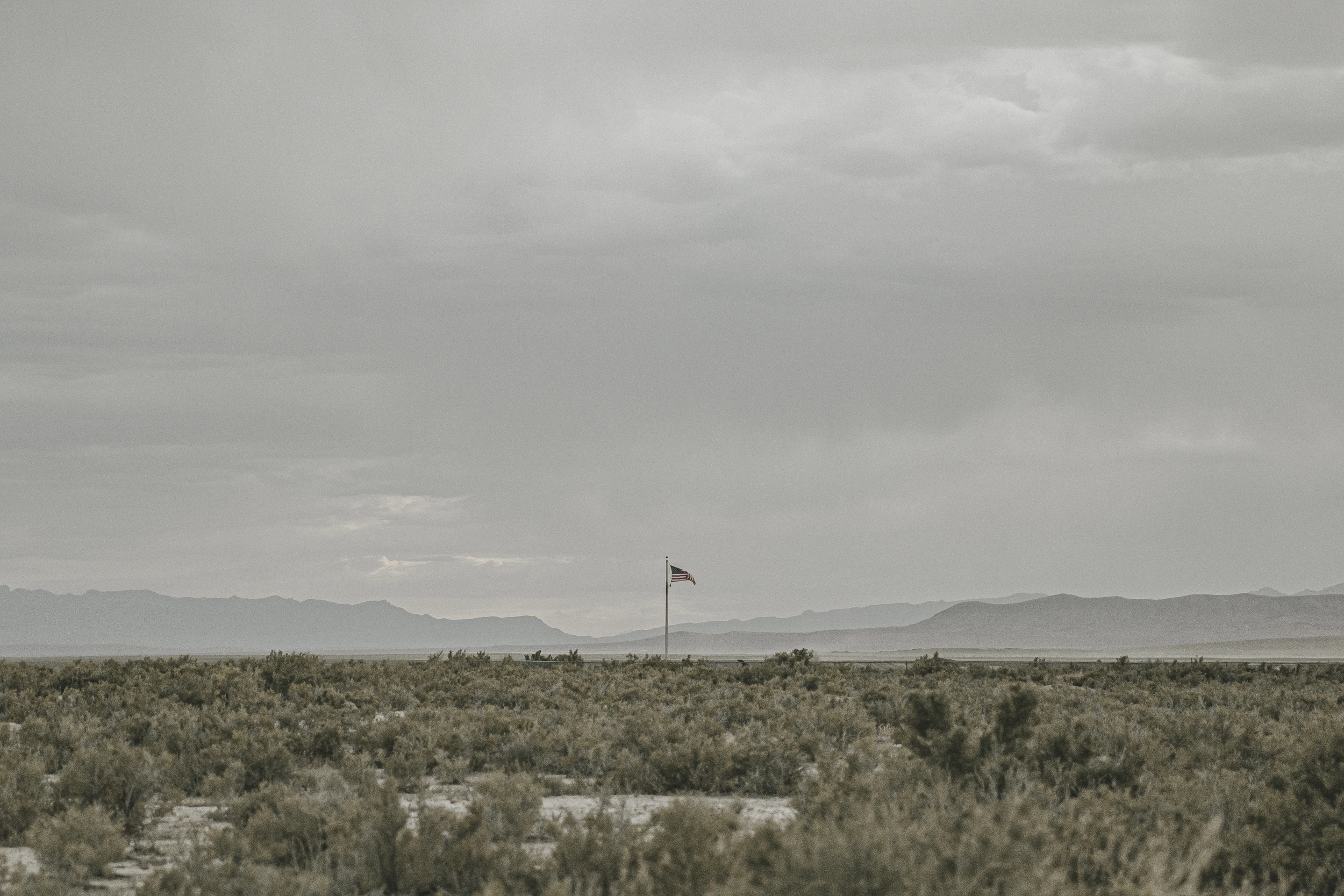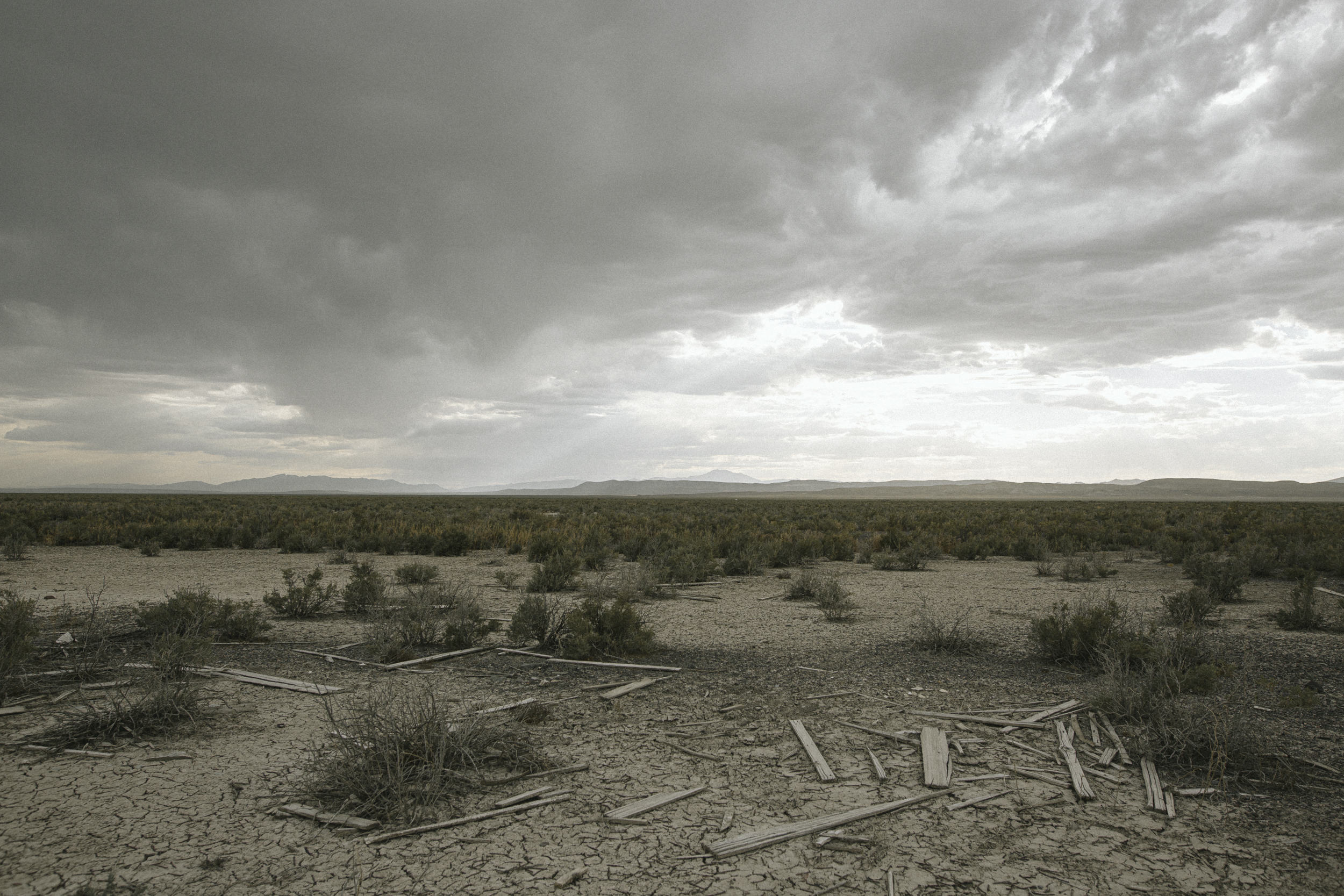
Located in central Utah, approximately 135 miles southwest of Salt Lake City, the Central Utah Relocation Center—commonly known as Topaz—was the second least populous War Relocation Authority concentration camp, reaching a peak population of 8,130 incarcerees.
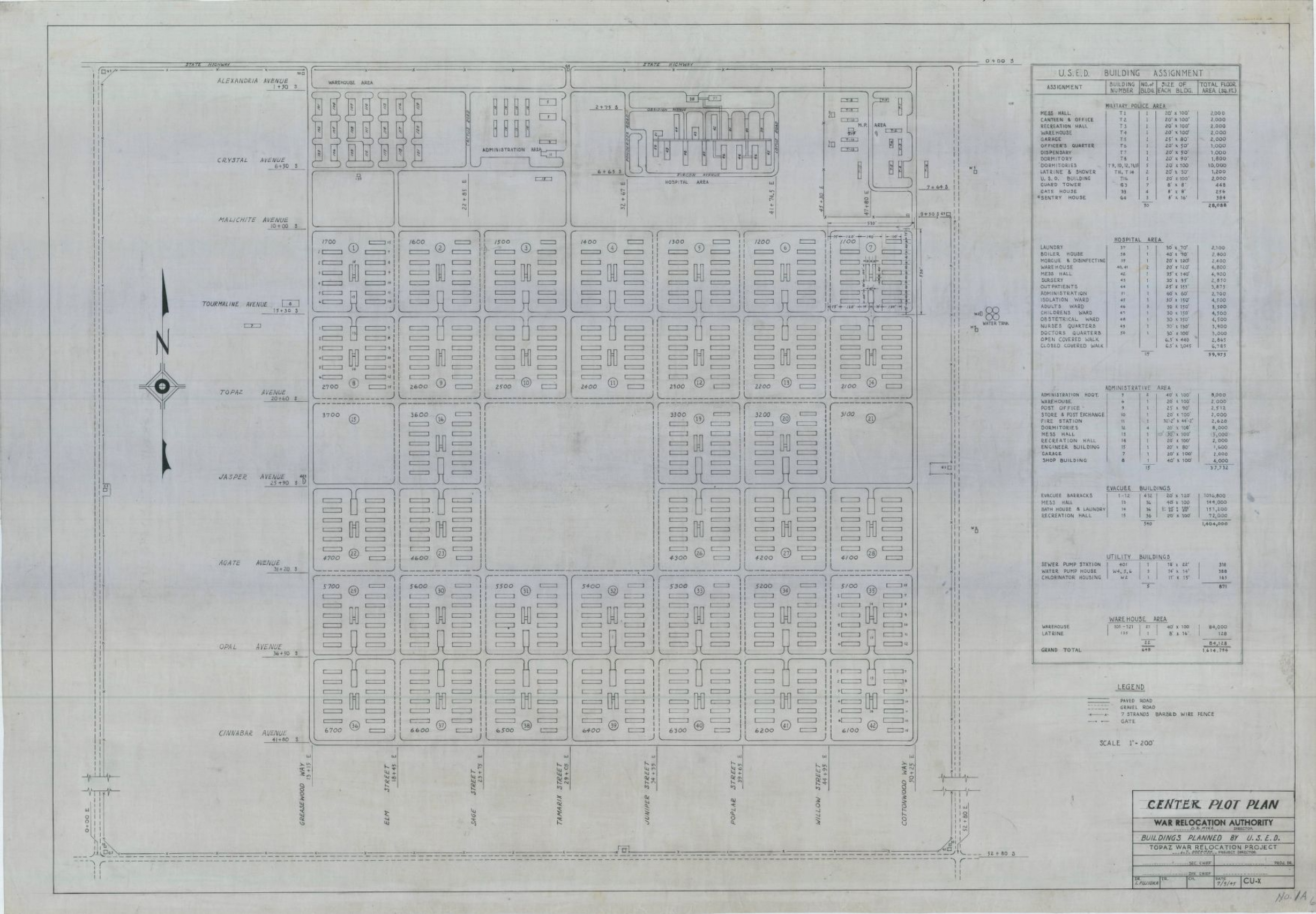
The War Relocation Authority‘s master plot plan for Topaz. Courtesy of the National Archives and Records Administration.
The camp occupied 19,800 acres in the Sevier Desert, land that was originally the ancestral home of the Núuchi-u people. Topaz was notorious for its extreme weather fluctuations—summer temperatures soared above 105 degrees, while winters plunged below zero. The dust storms at Topaz were particularly severe, even compared to other War Relocation Authority camps, making daily life especially difficult for incarcerees.
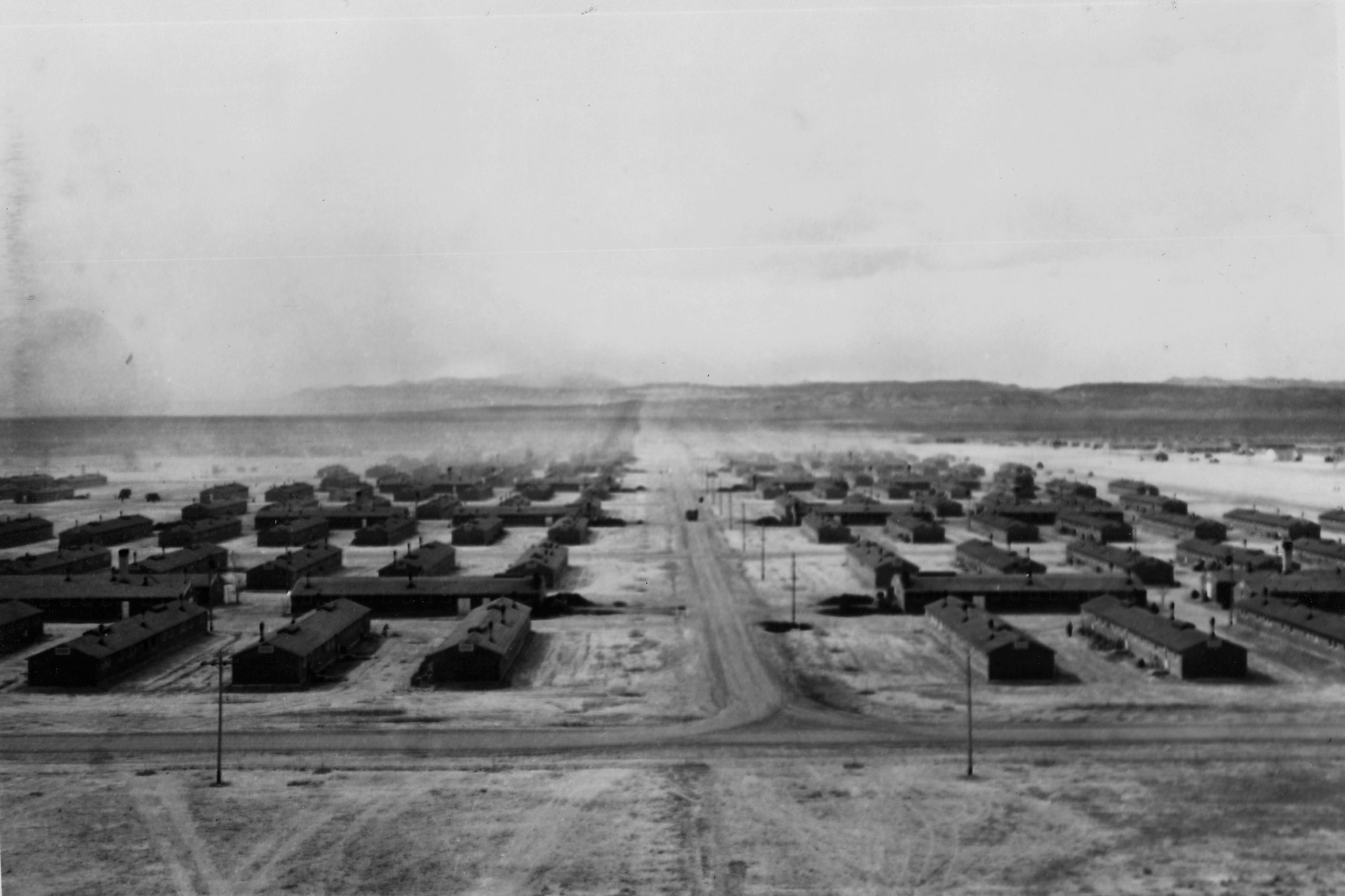
The Topaz concentration camp with Thomas Range in the background. March 14, 1943. Courtesy of the National Archives and Records Administration.
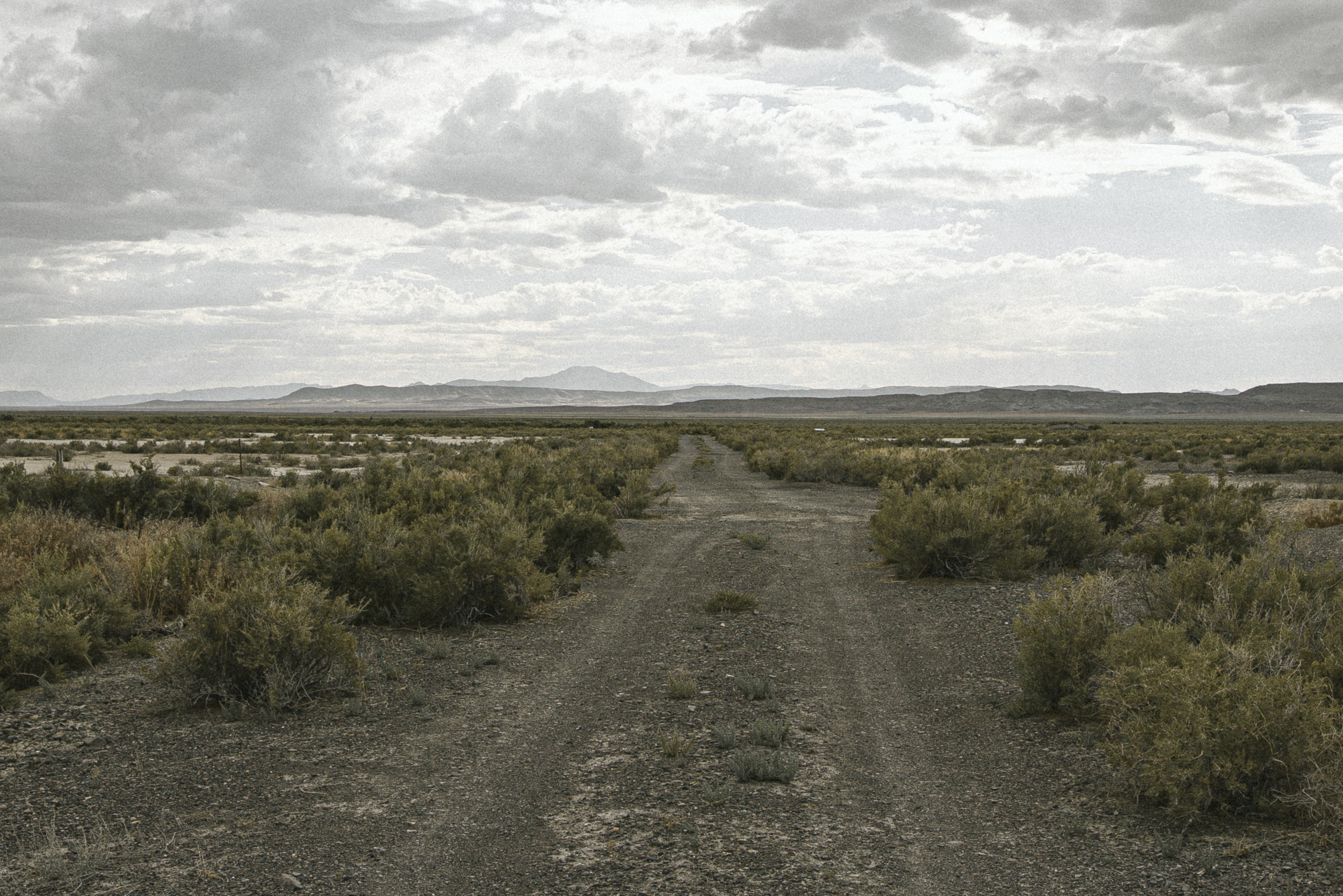
The Topaz concentration camp with Thomas Range in the background. July 23, 2022.
When the first incarcerees arrived in fall 1942, they found much of the camp still under construction. Many barracks were incomplete, forcing some families to double up with others or sleep in public spaces, such as mess halls and hospital buildings. Others were assigned to barracks without roofs, mattresses, or blankets, despite nighttime temperatures dropping to 10 degrees by October.
The camp’s coal supply was also critically low. A company contracted to deliver 25,000 tons of coal had provided only 40 tons—less than one percent of the promised amount—leaving incarcerees without sufficient heating during the freezing months. The shortage lasted until November 1942, forcing shortened school days and strict two-hour windows for showers based on heat availability.
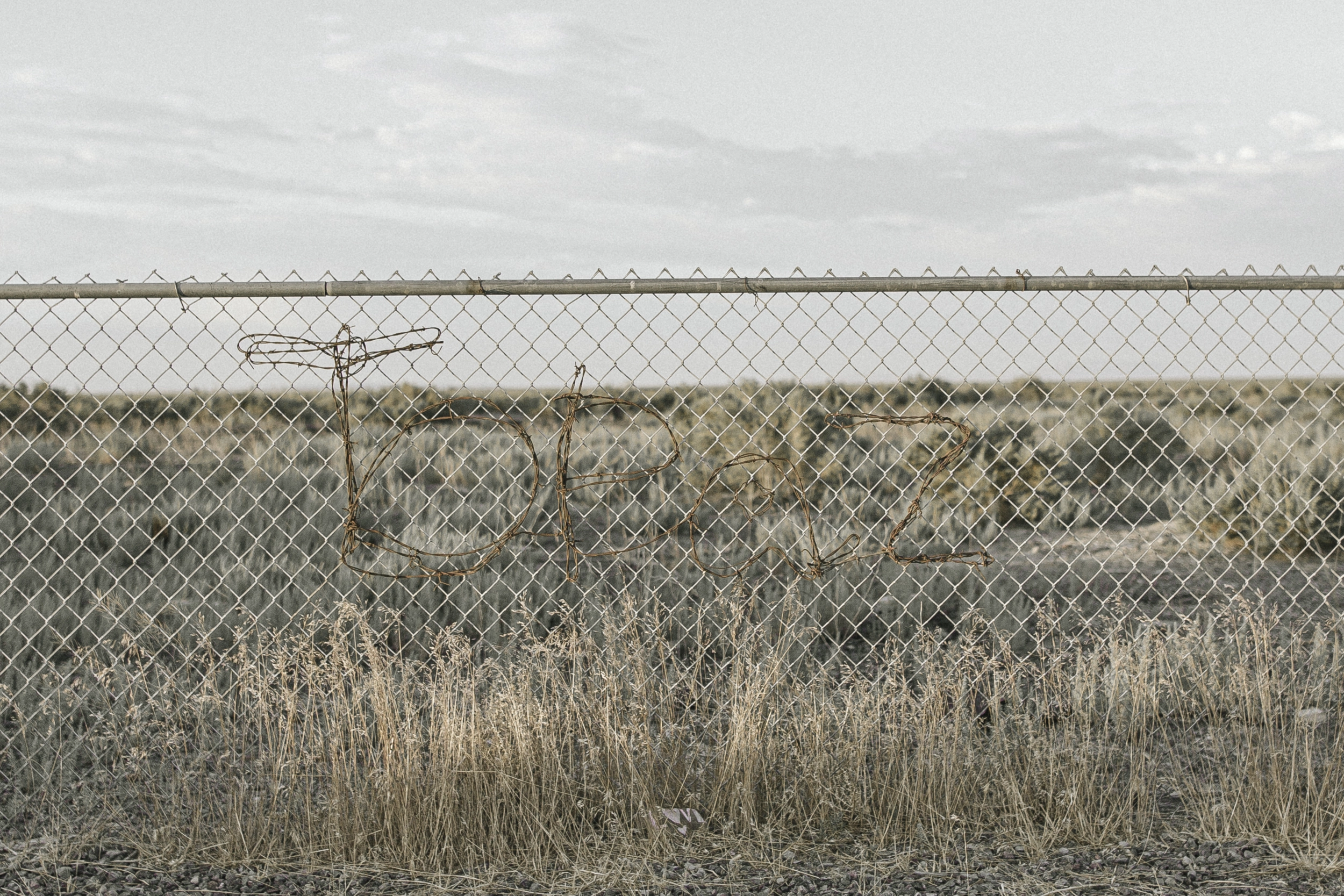
The Topaz concentration camp was informally named after Topaz Mountain, a nearby summit known for its deposits of semiprecious minerals like topaz, red beryl, and opal.
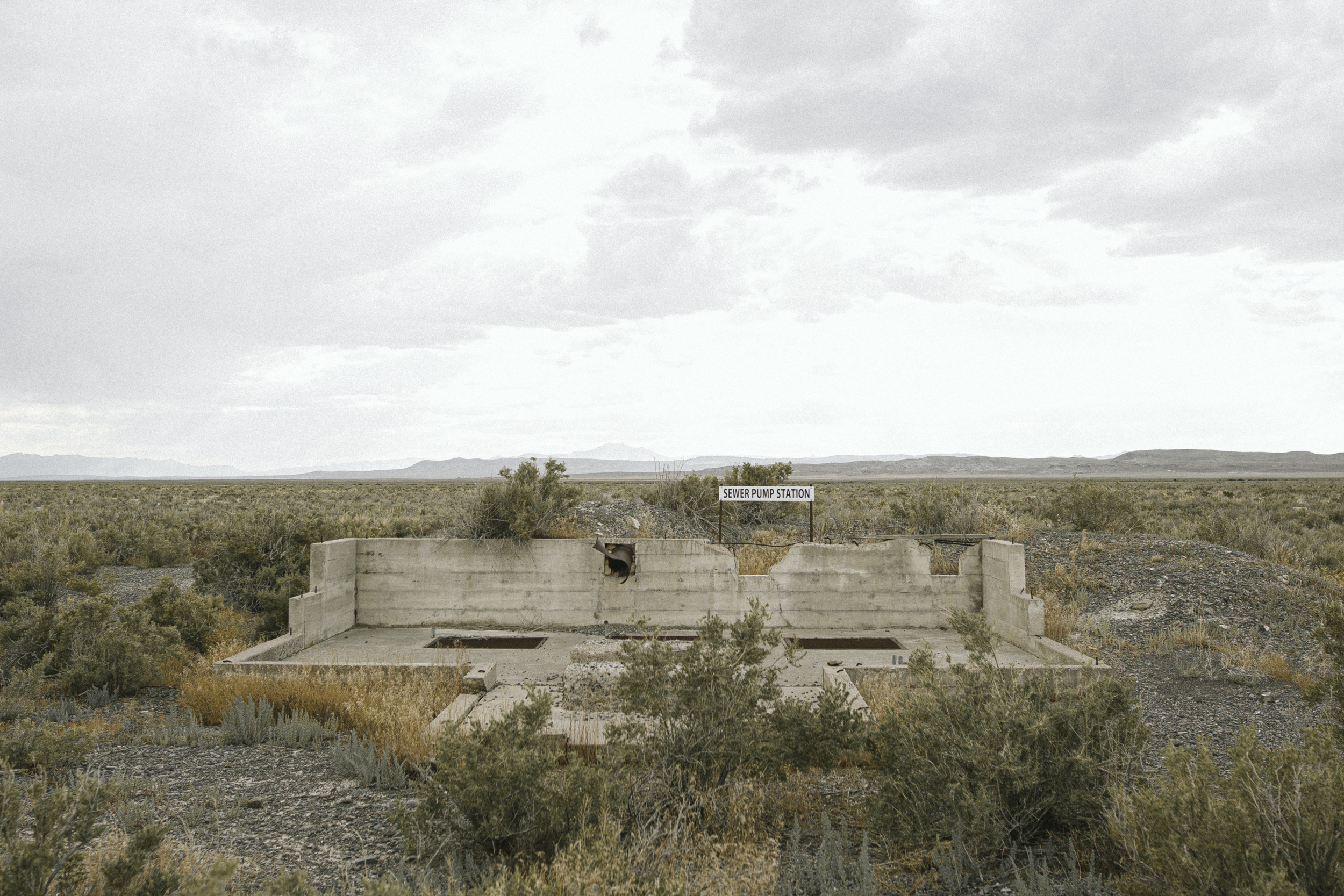
The infrastructure at Topaz was hastily built, often incomplete when incarcerees arrived. Basic utilities—like this sewer pump station—were critical in making the camp livable, but supply shortages and extreme weather made conditions difficult for incarcerees.
Food supplies at Topaz were unreliable. In spring and summer 1943, a severe meat shortage left incarcerees with a diet consisting mostly of organ meats, including liver, hearts, and tripe. It wasn’t until August 1943 that beef and pork became regularly available again.
The barracks at Topaz were constructed from pine and elevated on stacked wood scraps, offering little insulation from the harsh desert climate. Incarcerees dug subterranean spaces beneath their barracks to escape extreme temperatures, built furniture out of scrap lumber, and planted ornamental gardens to create a sense of normalcy.
Unlike other War Relocation Authority camps, the relationship between incarcerees and the local community was relatively amicable. Some attribute this to the predominantly Mormon population in the region, a community that had also experienced religious persecution in its history.
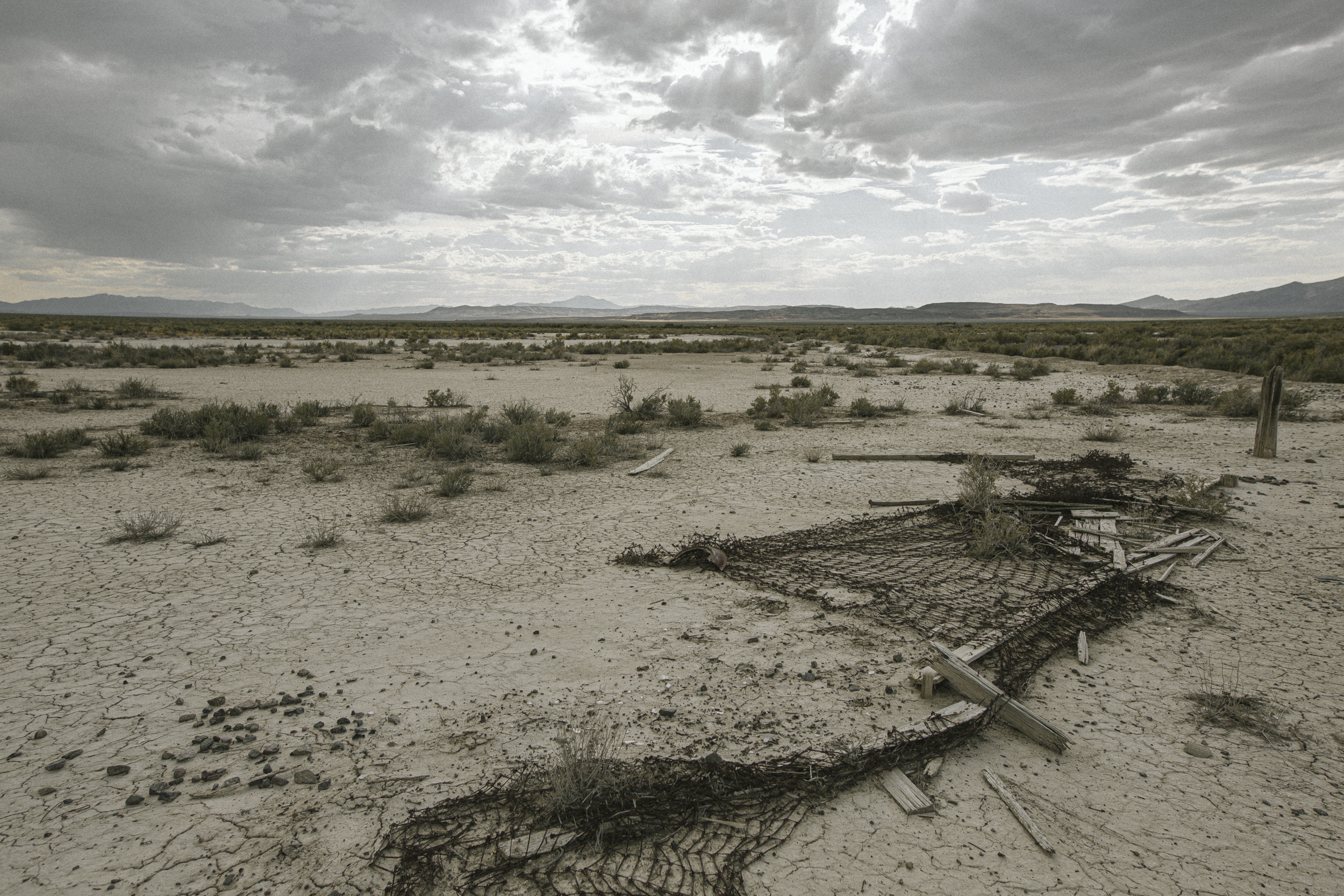
Amid hardship, incarcerees at Topaz found ways to create moments of normalcy. Baseball became a beloved pastime, with makeshift fields built in the dusty landscape.
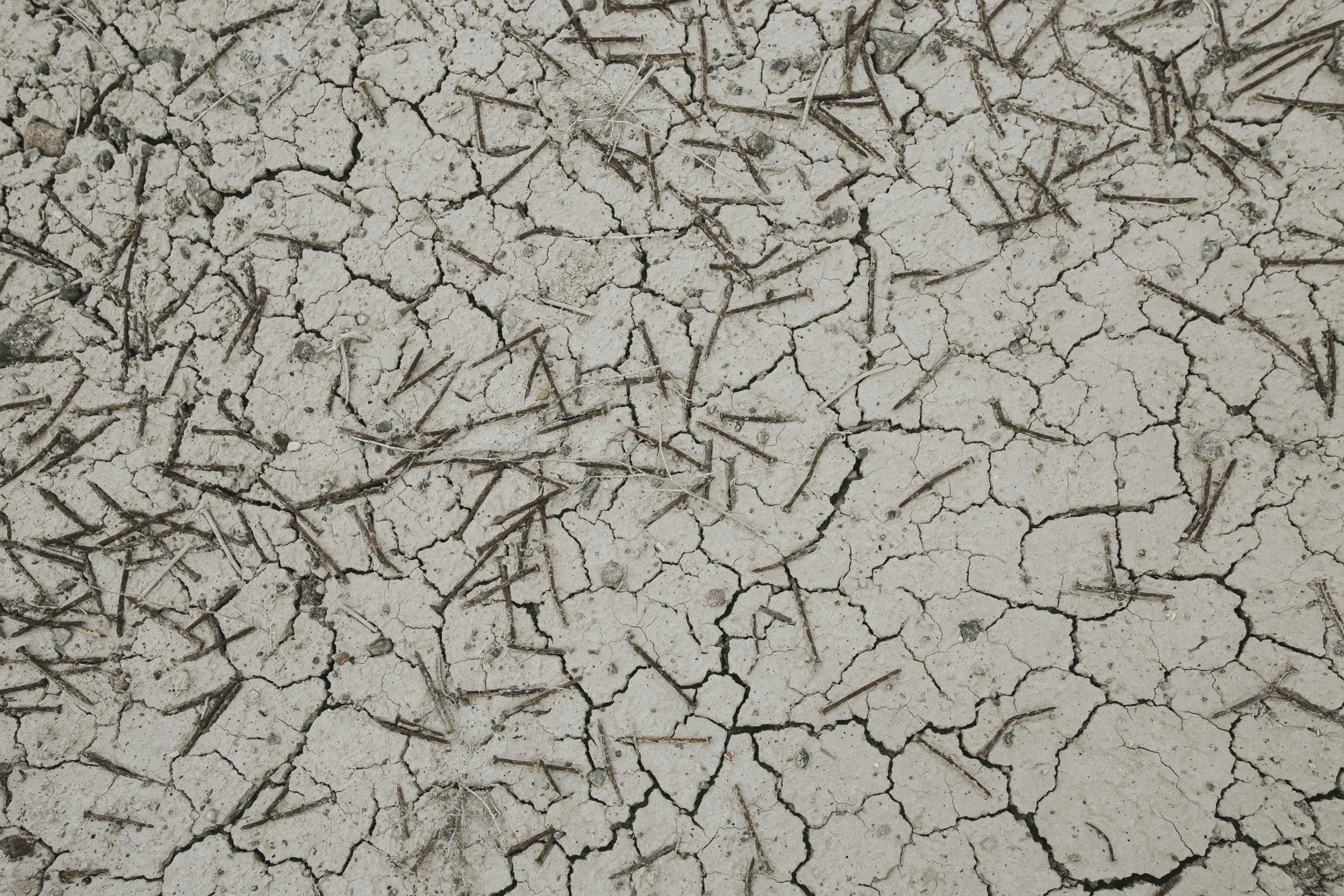
Once a populous camp housing over 8,000 incarcerees, the Topaz concentration camp now consists of two monuments, some building foundations and portions of the perimeter fence.
Topaz became known for its thriving art school, founded by renowned artist and University of California professor Chiura Obata. The school attracted several prominent artists, including Hisako Hibi, Frank Taira, Miné Okubo, and Byron Takashi Tsuzuki. Miné Okubo’s illustrated memoir, Citizen 13660—published in 1946—became one of the earliest and most influential first-person accounts of Japanese American incarceration, helping to preserve the memory of the camps in the postwar era.
Why is Topaz significant?
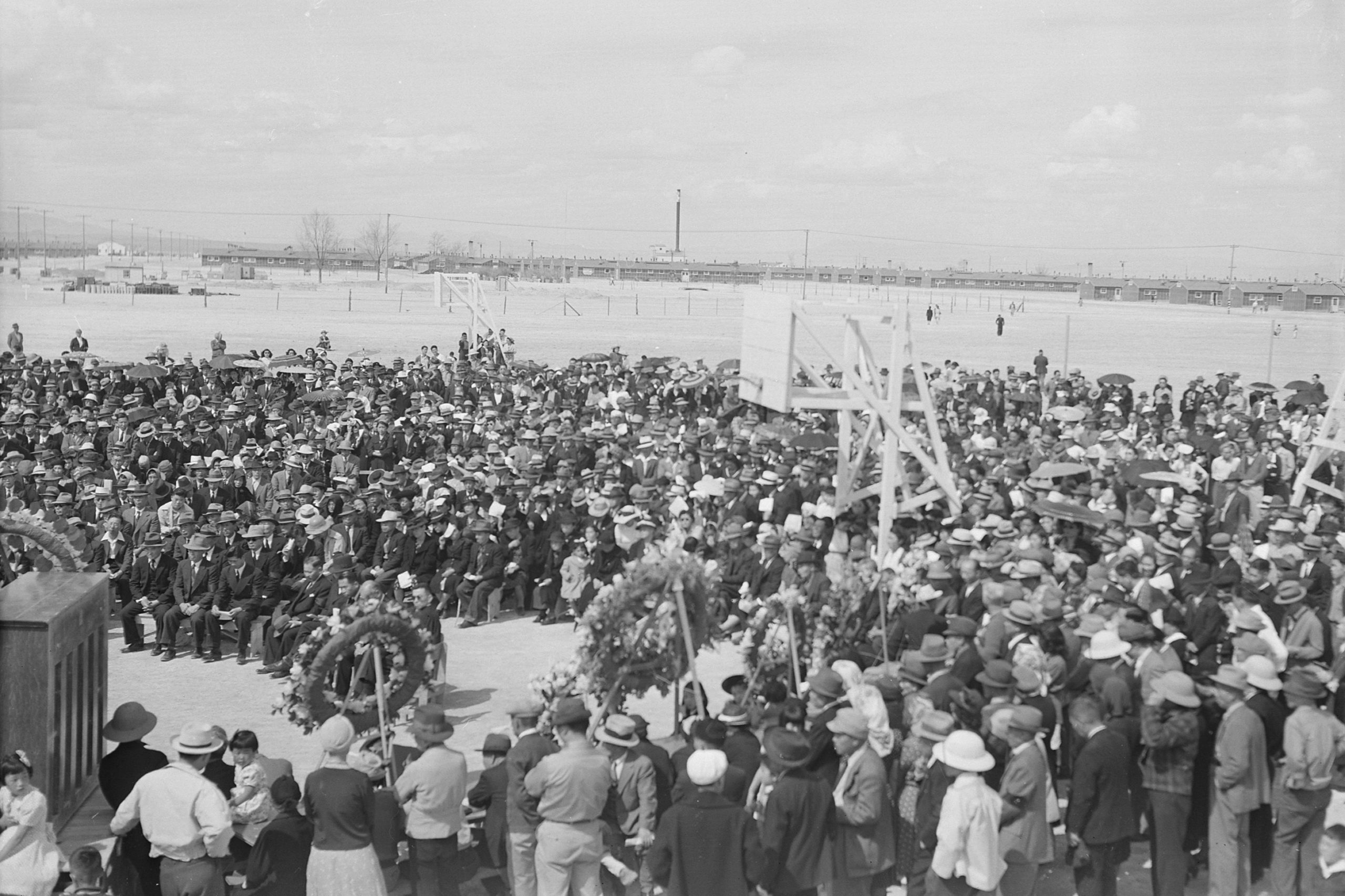
James Hatsuaki Wakasa‘s funeral. April 19, 1943. The man accused of killing Wakasa—Private First Class Gerald Philpott—was found not guilty in a court martial trial. Courtesy of the National Archives and Records Administration.
Topaz is known as the site of the fatal shooting of James Hatsuaki Wakasa, an Issei incarceree who was killed by a guard while walking his dog inside the camp’s perimeter. The guard, 19-year-old Private Gerald Philpott, later stood trial in a court-martial but was found not guilty.
Wakasa’s funeral was attended by up to 3,000 incarcerees, a powerful demonstration of the deep loss and anger felt by the community. In response to his death, a group of Issei incarcerees built a stone monument in his memory, an act of defiance and resilience. However, camp authorities ordered the monument to be destroyed. Rather than complying fully, incarcerees secretly buried the monument, leaving a small portion exposed.
Nearly 80 years later, the monument was rediscovered when Topaz descendant Nancy Ukai uncovered a 1943 map marking the exact location where Wakasa had been shot. Working with archaeologists Jeff Burton and Mary Farrell, community researchers pinpointed the location of the buried structure. In 2021, Japanese American descendants and community members formed the Wakasa Memorial Committee, working to ensure that the monument and Wakasa’s story are properly honored and preserved.
Please note: These photographs were taken with permission and permits where required, in accordance with site guidelines. Visitors must respect and follow all visitation protocols.
This historical overview is informed by research from the Densho Encyclopedia (accessed in 2022), National Park Service (accessed in 2022), and interviews conducted during a visit to the camp in 2022.
